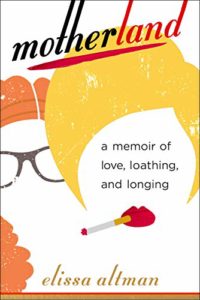This happens to me at least once a year and this time around, it was particularly bad. $137.23 bad, and I can only blame it on seeing
Wavy Gravy (
nee Hugh Romney, possible relation to Mitt if only for his organizational skills) on television last night, recalling how he and his Hog Farmers schlepped thousands of pounds of “macrobiotic rice” to the Woodstock Festival in 1969, exactly forty years ago this past weekend.
Well, that explains my shopping bill.
I’m not sure whether the festival actually gave birth to the Brown Food Movement in Woodstock, or if it existed in upstate New York (in Bethel, site of the concert, or in Woodstock proper, about an hour away) long before
Michael Lang–he of the fabulous hair and leather vest–envisioned the
three day bacchanal. I do know that Ithaca’s Molly Katzen didn’t publish her
Moosewood Cookbook until 1977. Edward Espe Brown’s
Tassajara Bread Book came out in 1970, but he’s a Zen monk from California and therefore was probably quite early to the party. But either way, I’ve had a very long relationship with Woodstock and the odd thing that happens to me, culinarily-speaking, whenever I get near either it (
it being
the village of Woodstock) or any mention of
It (meaning the concert, which, at six years old I was far too young to attend and which my older cousins studiously avoided. We don’t do mud in my family): I have a sudden desire to cook Brown Food in massive amounts.
Even as a small child, Woodstock held a very special place in my life. The short version: sometime in the 1940s or thereabouts (the story has been told to me about a million different ways, depending on which way the wind is blowing), my Uncle Marvin’s father, Harry–an anarchist/architect who had managed to escape from Russia with the Czar’s troops chasing him the whole way–bought a chunk of property right on Tannery Brook in Woodstock proper, with the intent to build houses there so he could get the family’s kids out of the city for the summer. This was not just whim; polio had infiltrated the city’s schools and playgrounds, and he wanted his grandkids and nieces and nephews out of danger. But what started as just a practical idea wound up being a virtual Brigadoon: he built 3 houses surrounding a small central compound less than a block away from the brook, less than three blocks away from the center of town.
In our family, we all have very separate memories of Woodstock. My cousin Nina tells me, with great and precise detail, that she can close her eyes and see her Grandma Lena (Harry’s wife) walking from her house down the path to Nina’s, holding a still-warm, freshly-baked blueberry pie, because she knew how much her granddaughter loved them. There are stories of my cousin Stan’s succulent barbecued chicken, of volleyball games and of teaching the children how to paint; and of how, during the War, Lena and my Aunt Thelma pin-pointed on a gigantic map exactly where my Uncle Marvin was in Europe, based on an agreed-upon set of secret clues he’d sent her in letters, which passed the censors without issue. As a child, I remember little more than feeling remarkably safe there, and being surrounded by very cool people who all really liked each other a lot, which I guess is not too different from how the festival-goers claimed to feel during that muddy weekend in 1969, forty or so miles down the road from my aunt and uncle’s house. My family’s compound in Woodstock was just like the festival, only with pinochle and
Allan Sherman.Years after my family sold the property in the 1970s, my time in Woodstock was limited to visits as a teenager on my days off from a summer job working in Maplecrest, New York, and some years later, visiting with my late friends Peter and Tim, who had a small cottage up the road from town, in Lake Hill. In both instances, I found myself searching for Lena, her outstretched hands holding a warm, freshly-baked blueberry pie, and for Stan’s barbecued chicken. Instead, I was faced with Brown Food.
Peter and Tim, in the space of a few years, cooked for me all manner of Woodstockian Brown Food: there were pilafs and tarts, breads and pies, soups and “salads”, the latter of which were always devoid of a high note, like a simple vinaigrette, or even a squeeze of lemon. They were just Brown. And murky. And muddy. Much like Wavy Gravy’s recipe for a dish that he would call “breakfast in bed for 400,000”:
A few years later on Thanksgiving, I spent the holiday at Peter and Tim’s house and was given clear directions: we don’t care what you cook, but it has to be vegetarian. They didn’t specify that it had to be brown, but it was strongly suggested to me that I stuff a large pumpkin with a brown lentil stew, which I did. What they neglected to mention (and because I was not a vegetarian I didn’t know) was that unless I bought the correct kind of pumpkin, the stuffed one I had in the oven would explode and ooze brown lentil stew all over their brown 1970s oven, and all over their brown pine floors. Which it did.
The odd thing about The Brown Food of Woodstock, at least in Peter and Tim’s case, was once they left Woodstock and headed home to the city, their food ceased to be brown. Sometimes, it was green. Sometimes, if tomatoes were involved, it was red. But once they went back to Woodstock, the food they cooked — and they asked me to cook — was invariably brown, including:
Lentil nut loaf with brown sauce
Steamed brown rice
Brown rice and barley pilaf
Bulgur Pilaf
Kasha Stew
Millet and butternut squash goulash
Brown lentil stew
Baked amaranth pie
Not that there’s anything wrong with these dishes. There isn’t. But there’s far more to vegetarian life than Brown Food: just ask Deborah Madison, Robin Asbell, Lorna Sass, Suvir Saran, Yamuna Devi, and many, many others. Even Susan no longer gasps when I announce that I’m making French lentils for dinner; it took her a while, but she now knows that they don’t always have to be murky. Or brown.
So, I didn’t buy the vegan Birkenstocks this time, but my pantry is now filled with all manner of Brown Food, with which I will attempt to create dishes that do not remind my partner of the vegetarian food of the late 1960s. Honestly. I just couldn’t help myself. I blame my knee-jerk culinary reaction on the very idea of Woodstock as being like Proust’s madeleine: when I close my eyes and think of Wavy Gravy and what a great organizational guru he really must have been, and having breakfast at the now-defunct Misty’s on the Green, and I remember Peter and Tim, and Grandma Lena and her blueberry pie, I just smile. This dish, which marries the best of their worlds, is dedicated to them.
Not Exactly Lena’s Whole Wheat Blueberry Pie
I’m one of those odd people who just never liked pie until I met Susan, who could eat pie morning, noon, and night. This recipe marries fresh, seasonal blueberries to a surprisingly light whole wheat crust that bakes up reasonably flakey and crispy. And brown.
Serves 6, or Susan
For the crust
1-1/2 cups whole wheat pastry flour
1/2 cup unbleached pastry flour
1/2 teaspoon salt
1 stick cold unsalted butter, in small cubes
1/2 cup cold water
For the filling
1/2 cup granulated sugar
2/3 cup light brown sugar
1/3 cup instant tapioca
6 cups fresh blueberries
2 tablespoons fresh lemon juice
2 tablespoons unsalted butter, in small cubes
1. In the bowl of a food processor, combine the flours with the salt, pulsing rapidly. Add the butter a few cubes at a time, pulsing until the combination looks like rolled oats. Drizzle in the cold water, pulsing rapidly, until the crust comes together in a ball. Remove, divide in half, and roll out one crust at a time on a well-floured surface. Refrigerate between sheets of wax paper, until you’re ready to assemble. When ready, press one crust into the bottom of a pie tin.
2. Preheat oven to 375 degrees F. Fold together the sugars and tapioca. Toss with the blueberries and lemon juice. Pour into the pie shell, mounding the berries in the center. Dot with butter and cover with the second pie crust. Crimp the edges using the tines of a fork, unless you want to get fancy. Poke the ubiquitous pie holes in the top with the same fork.
3. Place the pie on a baking sheet, and set it in the oven on a middle rack. Bake for 20 minutes, until the top begins to get brown(er); reduce the heat to 350 degrees F and bake for another 25 minutes, until the filling is bubbling. Cool on a wire rack.




